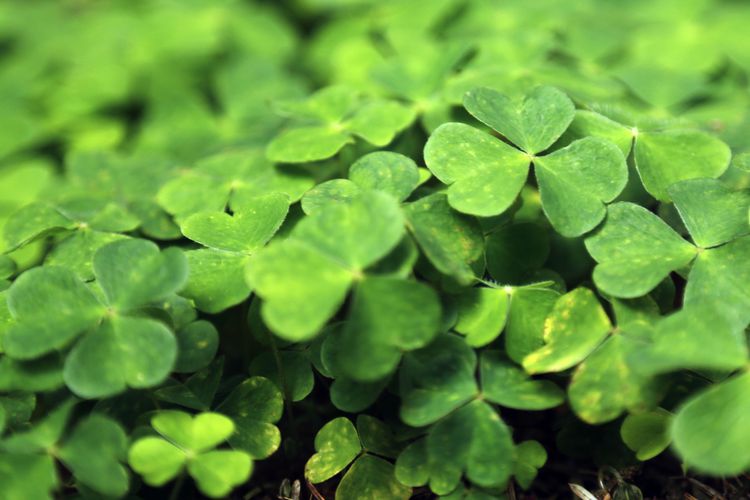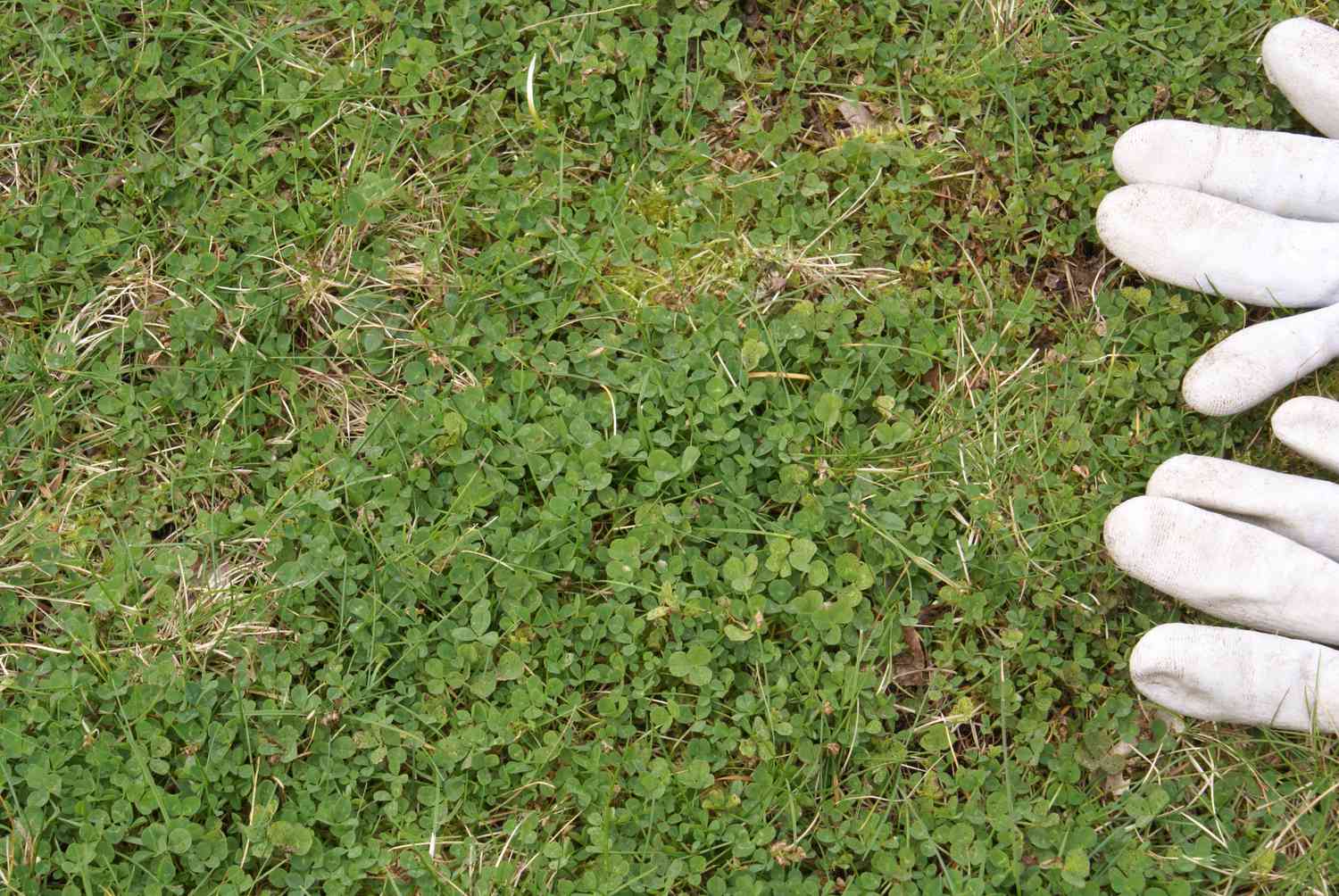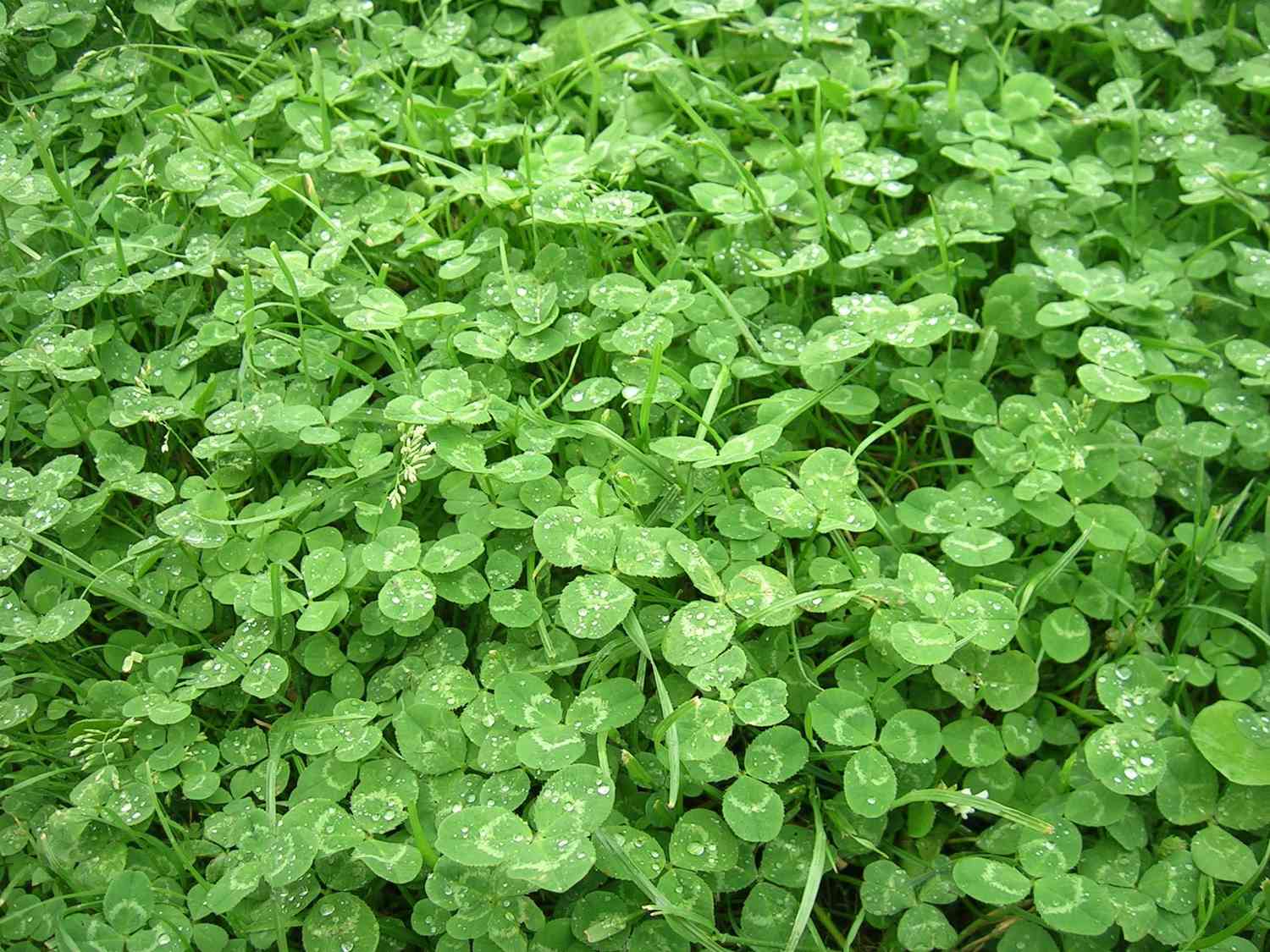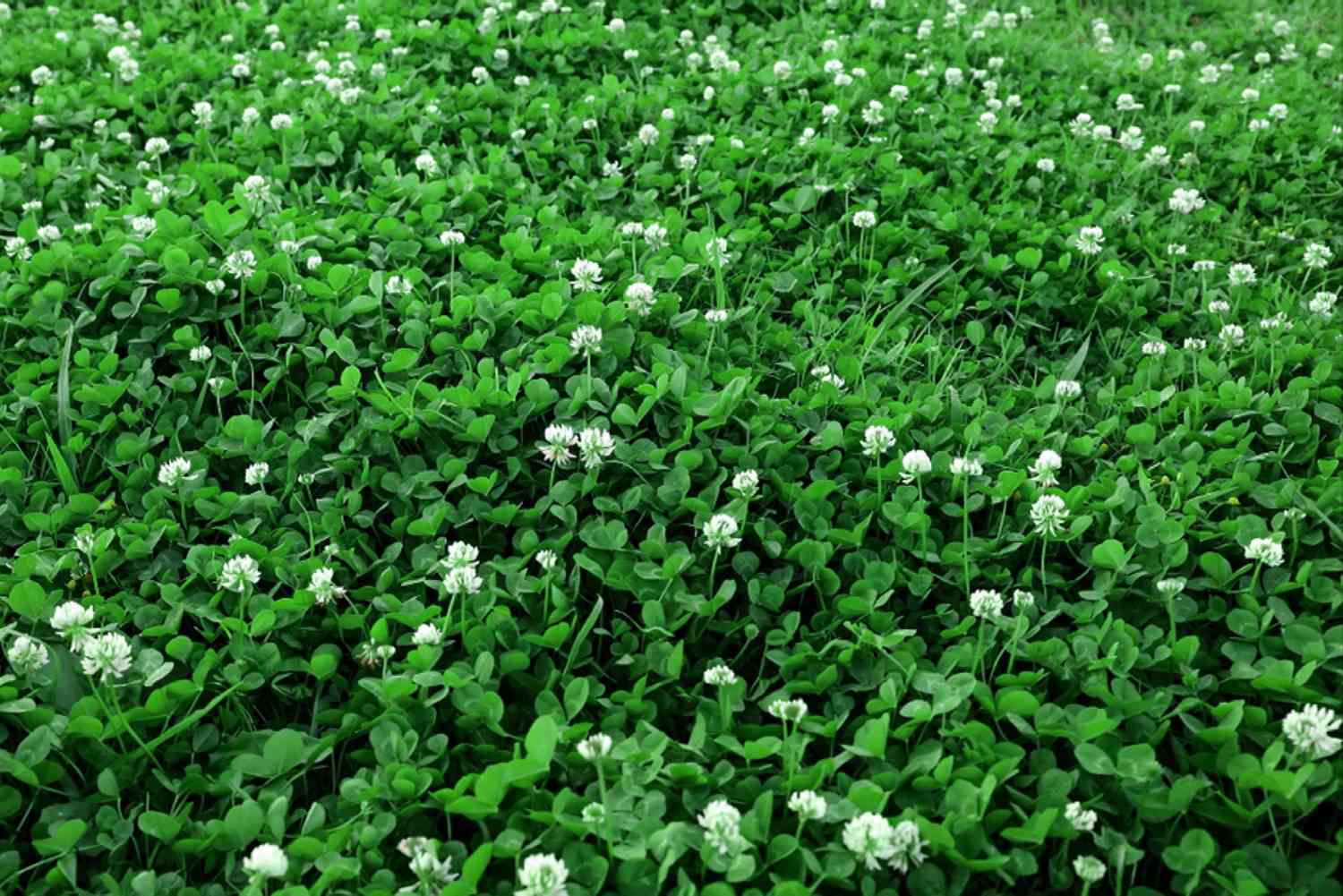Contents

Micro clover, often referred to as microclover, is a diminutive type of white clover that is highly recommended for revitalizing lawns in the spring. Developed to maintain a low growth habit and feature petite leaves, it can serve as a primary ground cover or be incorporated into a lawn blend at a rate of 2 to 5 percent. When included in a lawn mixture, it provides a steady source of nitrogen and aids in weed suppression.
For many years, standard-sized white clover (Trifolium repens) has been incorporated into lawn seed mixtures, yet it can test the patience of those who maintain lawns. This clover variety has the ability to outcompete certain grass types, potentially dominating the area. It blooms rapidly, drawing in bees.
What exactly is Micro Clover?
Micro clover is a miniature form of Dutch white clover (Trifolium repens), reaching heights of 4 to 6 inches. It features trifoliate leaves that resemble shamrocks. This is the smallest clover variety, specifically bred to be shorter, less dense, and to produce fewer flowers compared to the typical clover found in grass mixtures. It coexists well with grass, allowing for mowing down to a height of 3 inches. The most well-known varieties of micro clover include ‘Pirouette’ and ‘Pipolina’.
This plant resembles typical clover due to its leaf structure, yet it is only one-third to one-half the size of standard clover, featuring significantly smaller leaves. It tends to grow more compactly, regrowing smaller after being mowed. During the summer, it produces white flowers for about a month, but you can trim the flowers to maintain a lush green appearance in your lawn.



Advantages of Micro Clover
Micro clover offers numerous benefits, such as its resistance to diseases and pests, its effectiveness in weed management, its capacity to provide nitrogen, its attraction of helpful insects, and its potential to lessen the requirement for fertilizers.
- Micro clover thrives alongside various grasses, including tall and fine fescues, Kentucky bluegrass, and perennial ryegrass, creating a cohesive look. Additionally, it enhances the diversity of the lawn, improving its resilience against diseases and pests.
- Generates nitrogen: The decomposition of micro clover serves as an excellent nitrogen source within grass clippings.
- Incorporating micro clover into turf lawns can lead to a decrease in the frequency of fertilizer applications, requiring one less than lawns composed solely of grass.
- Flowers serve as a food source for bees, and micro clover is particularly effective in attracting and supporting pollinators.
- Micro clover grows quickly and effectively outcompetes broadleaf weeds, effectively suppressing their growth.
- Micro clover draws in helpful insects that target harmful pests, minimizing the reliance on pesticides. It lures in ladybugs, minute pirate bugs, lacewings, and parasitoid wasps—non-stinging predators that specifically hunt pests like aphids, whiteflies, scale insects, and cabbage worms.
- Repels specific lawn pests: Not all clovers serve as a food source for grubs and other insects that harm lawns, which helps to stop them from depositing their eggs in a lawn abundant with clover.
- Drought resistance: Micro clover exhibits greater drought resistance compared to turf grass, yet it falls short of the drought tolerance seen in common white clover, despite the existence of other lawn alternatives that offer superior drought resilience.
- Cold-resistant: Micro clover can thrive under snow and may remain green during winter months, depending on the temperature, and is resilient to cold down to USDA hardiness zone 3.
- Thrives in compacted ground: The deep-rooted nature of micro clover allows it to break through compacted soils, helping to aerate and improve them.
- Minimizes the necessity for lawn aeration or dethatching: The extensive root system helps to inhibit the buildup of thatch, which consists of decomposing grass, roots, and foliage.
- Minimizes soil erosion: The extensive root systems play a crucial role in preventing erosion on steep slopes.
- Dog urine resistant: Clover can withstand the effects of dog urine and playful pets. It has the ability to recover when pets disturb the plant.
- Salt-resistant: Micro clover can withstand de-icing salts and thrives in the tidal zones of saline waterways.
- Clover serves as a food source for rabbits, drawing them away from vegetable gardens that they typically invade.
Drawbacks of Micro Clover
Micro clover has several drawbacks, including lower tolerance to heat and shade compared to standard clover, a higher cost, and a tendency to struggle under heavy foot traffic. Additionally, it does not thrive in sandy soil and is susceptible to damage from broadleaf herbicides.
- Not resistant to heat or shade: During the intense summer heat, it may wither, leading to patches in your lawn. Micro clover requires a minimum of four hours of sunlight daily, making it unsuitable for shaded areas under trees or buildings. Prolonged exposure to dry heat may necessitate reseeding after the hottest period has ended.
- High-priced: Micro clover is a more expensive specialty seed compared to regular white clover, and it might not be easily found in every gardening store.
- Issues with a monoculture lawn of micro clover: A lawn entirely composed of micro clover can turn into a muddy area during the winter months. On its own, micro clover struggles to withstand heavy foot traffic; to recover from play or foot traffic, it needs to be combined with turfgrass.
- Vulnerability to southern blight: A lawn composed entirely of clover can be prone to various diseases. While micro clover exhibits strong resistance to many ailments, it remains vulnerable to southern blight, particularly in regions characterized by high humidity and warm nighttime temperatures.
Steps to Cultivate Micro Clover
Sow micro clover seeds in the spring, ideally around the time of your final frost. This plant thrives in cooler conditions during germination. For fall planting, aim to seed approximately eight weeks prior to your first frost to allow the clover to develop a strong root system before the cold sets in. If you’re considering blending micro clover seeds with your current lawn, follow these simple guidelines:
- Trim the grass to a height of 2 to 3 inches, and clear away any clippings and dead grass prior to planting.
- Plant the seeds at the suggested rate of coverage, then lightly rake or press them into the soil to ensure proper contact.
- Maintain a moist soil environment without over-saturating it to encourage germination. Ensure the soil does not become dry.
Micro Clover Can Withstand Frequent Mowing
Micro clover is smaller in height compared to the majority of turfgrass varieties. It can withstand frequent mowing. Furthermore, when maintained at a height of 3 inches, micro clover tends to produce minimal or no flowers.
Micro Clover and Eco-Friendly Lawns
Micro clover has gained popularity among individuals who favor organic lawn maintenance for several reasons:
- Micro clover serves as a continuous source of nitrogen for lawn grasses, potentially allowing for one less nitrogen application each year. The combination of grass clippings and micro clover can provide sufficient nitrogen for the soil. It’s advisable to conduct annual soil tests to assess whether the nitrogen requirements are being fulfilled.
- Micro clovers are traditionally cultivated broadleaf plants and are not genetically modified organisms (non-GMO) like some grasses. Genetically modified grasses can be designed to withstand herbicides used for weed control. In contrast, the low-growing, broad leaves of micro clover can effectively suppress certain stubborn lawn weeds.
- Micro clover addresses nearly all the disadvantages linked to traditional white clover, with the exception of its vulnerability to broadleaf herbicides.
Seeds with Coating or Without Coating
Micro clover seeds are available in both coated and uncoated varieties, with coated seeds being more common in the market today. The clay coating contains an inoculant of beneficial bacteria (Rhizobium leguminosarum biovar. Trifoli) that aids in the establishment of the plants and enhances nitrogen fixation, particularly in areas where clover or other nitrogen-fixing plants have not previously been grown. If the soil already contains this bacteria, uncoated micro clover seeds will perform adequately.
Where to Purchase Micro Clover
Micro clover (Trifolium repens var. pirouette) was first created in Denmark by DLF Trifolium and made its way to the United States around the year 2005. It is marketed under various names such as Microclover, Miniclover, Microgreen Microclover, and Micro Clover. While standard white clover seeds are readily available in home improvement stores, locating a source for micro clover seeds may require a bit more effort.
Price of Micro Clover Seeds
Micro clover seeds are priced higher per pound compared to regular white clover due to their specialized cultivation and popularity for their consistent appearance. The cost of micro clover generally ranges from approximately $30 to $65 per pound, varying by supplier.
For every 1,000 square feet of lawn area you wish to seed, you will typically require approximately 1 to 2 pounds of seed. Therefore, for a lawn measuring 10,000 square feet, the cost for the seed can range between $300 and $1,300.
Is micro clover beneficial for grass lawns?
Micro clover is an excellent enhancement for lawns, providing numerous advantages such as the ability to fix nitrogen, resist drought, endure cold temperatures, tolerate dog urine and road salt, and outperform weeds.
What is the process for sowing micro clover into my current lawn?
The optimal time to seed with micro clover is following a close mowing of the lawn and the aeration of the soil. Aerating the ground facilitates the seeds’ access to the soil surface and helps the soil to hold onto moisture and nutrients effectively.


 Tips for Cultivating and Maintaining Haworthia Cooperi Plant
Tips for Cultivating and Maintaining Haworthia Cooperi Plant Tips for Cultivating and Maintaining Peperomia Orba (Peperomia Pixie Lime)
Tips for Cultivating and Maintaining Peperomia Orba (Peperomia Pixie Lime) Tips for Cultivating and Maintaining Calathea Orbifolia
Tips for Cultivating and Maintaining Calathea Orbifolia